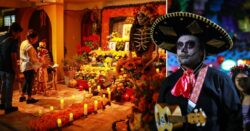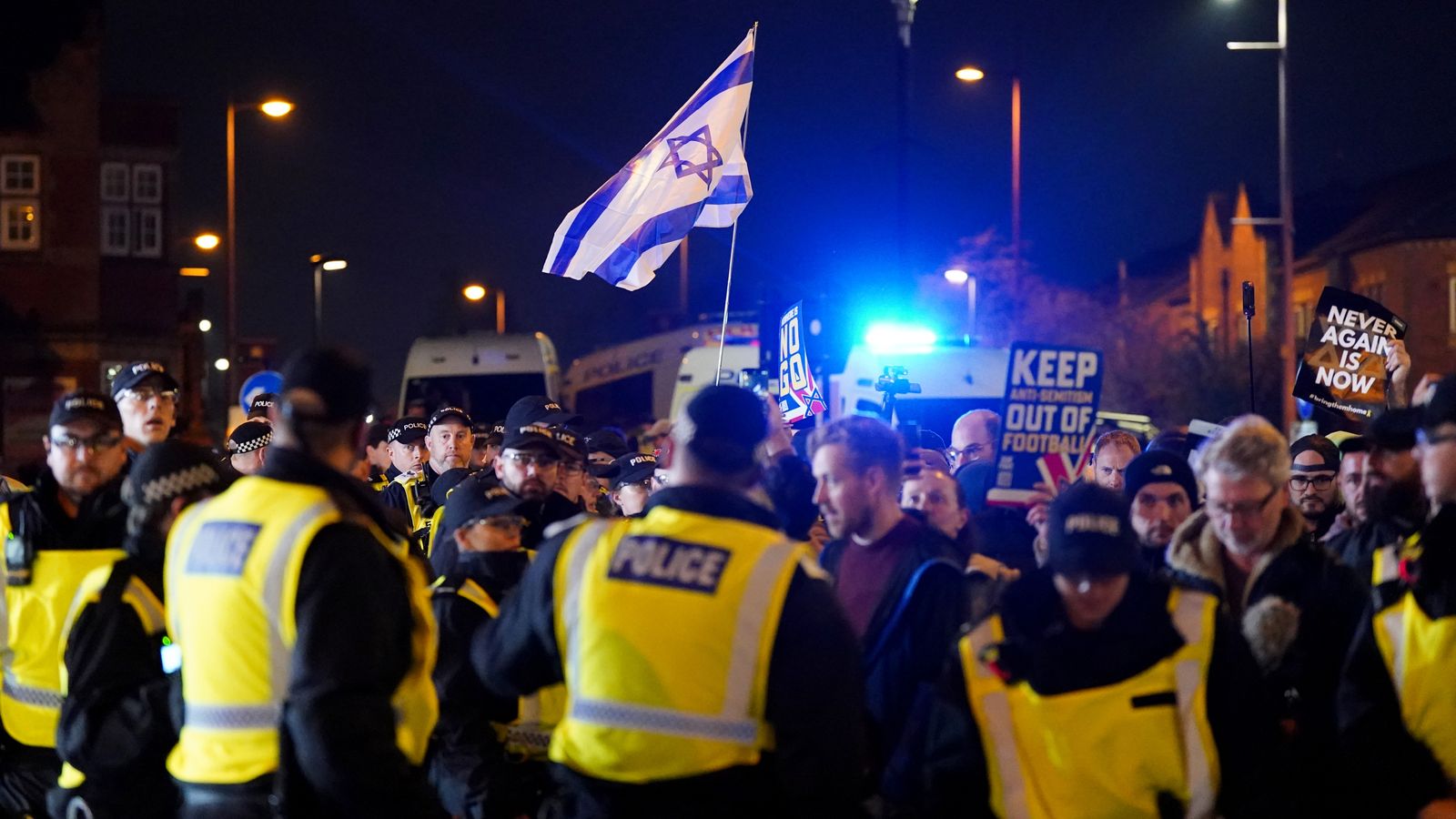The holiday is traditionally celebrated on November 1 and 2 in the central American country (Picture: Getty Images)
Mexico’s annual Day of the Dead celebrations are about to start in full for the first time since 2019 due to the coronavirus pandemic.
The holiday is traditionally celebrated on November 1 and 2 in the central American country, and sees families gather in a commemoration of life and death.
Instead of being a sombre occasion, mourning is swapped for celebration.
People create beautiful altars – called ofrendas in Spanish – at which they make offerings to their dead family members, which are traditionally believed to encourage visits from ghosts and allow the deceased to hear prayers for them.
Beautiful bright yellow marigolds, family photos and favourite food, drinks and objects are also placed at the altar.
Huge feasts are prepared so the living can share a meal with their dead loved ones, in the same way they would have if they had still been alive.
Skulls – or calveras in Spanish – are the most recognisable objects from the Day of the Dead. They are usually painting with a smile, symbolising laughing in the face of death.
They appear as sugar sweets, are made in clay or are painted on people’s faces.
Jose Luis Beltrem puts candles on the altar dedicated to his dead relatives in Malinalco (Picture: Getty Images)
Musicians perform during a procession through the Jalatlaco neighbourhood on October 31, 2022 in Oaxaca (Picture: Getty Images)
Families eating dinner together in Oaxaca (Picture: Getty Images)
A traditional ofrendas, or altar, filled with offerings and bright marigolds (Picture: Getty Images)
Amelia Estrada poses at the altar dedicated to her deceased husband, Manuel, in Malinalco (Picture: Getty Images)
Marigolds are used as they are believed to be pathways which bring departed souls to their offerings due to their strong colour and scent.
They are called Flor de Muerto – Spanish for ‘flower of dead’ – and they symbolise the beauty and fragility of life.
Many types of marigold are native to Mexico and central America.
The celebrations are split into three sections – día de los Angelitos (day of the little angels), día de los Difuntos (day of the adults) and día de los Muertos (day of all the dead).
The day of the little angels begins on November 1 at midnight, where the spirits of dead children are believed to return to their families for a day. The ofrendas are made for them and the names of the children are written on sugar skulls.
A man with his face painted poses for a photo (Picture: Getty Images)
People look a traditional ‘Dia de Muertos’ offering during Day of the Dead celebrations in Oaxaca (Picture: Getty Images)
People pose for a photo as part of a procession (Picture: Getty Images)
Marigolds are used as they are believed to be pathways which bring departed souls to their offerings (Picture: Getty Images)
At midnight on November 2, the celebrations shift to honour dead adults and ofrendas are made in a similar way.
But the evening sees a big meal where families gather to play games, reminisce, play music and drink tequila together.
The final day, November 3, is the grand finale of the Day of the Dead celebrations. People often come together in the streets dressed as skeletons with their faces painted and visit local cemeteries.
People often take this opportunity to clean and restore the graves of the departed.
The Day of the Dead is not a Mexican version of Halloween. Halloween is the observance of Allhallowtide, and originated as a Celtic festival where people would gather to light bonfires and wear scary costumes to ward off ghosts.
Halloween is generally not marked in Mexico.
Get in touch with our news team by emailing us at [email protected].
For more stories like this, check our news page.
It will return in full for the first time since 2019 due to the coronavirus pandemic.





